Archival Show and Tell #4
US Navy Interwar Camouflage Experiments, 1935/36
by Dana Bell
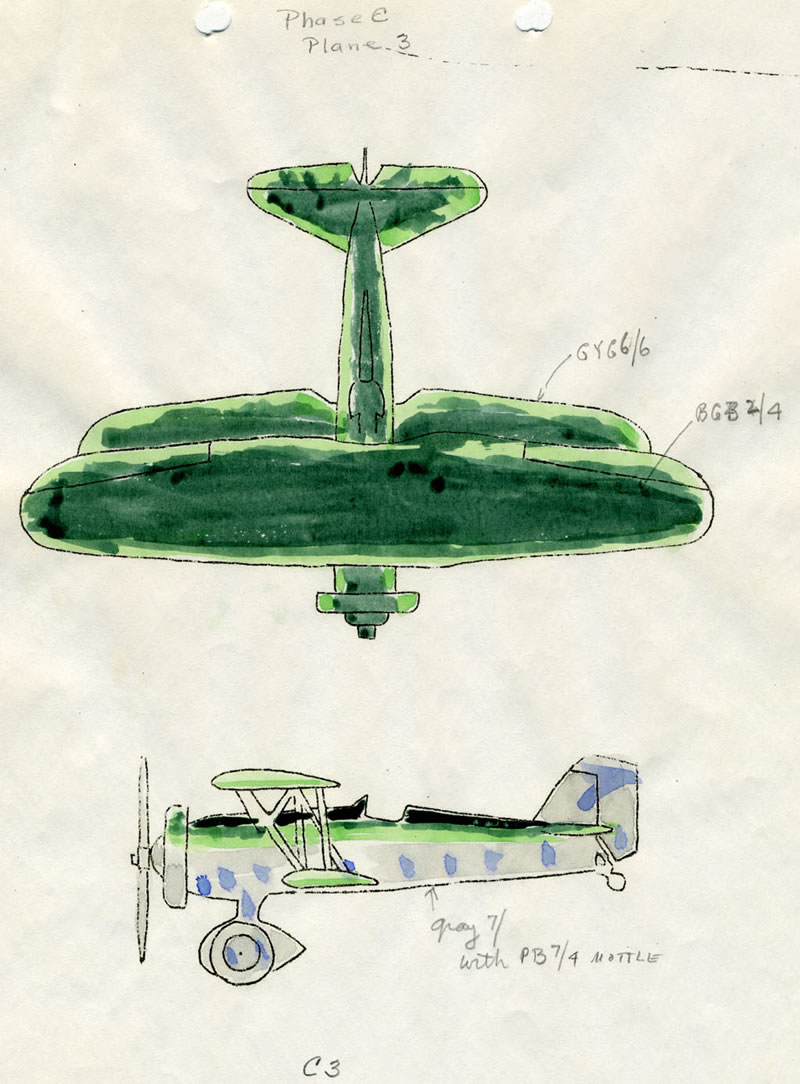
|
US Navy Experimental Camouflage
Phase C, Plane 3
|

HyperScale is proudly supported by Squadron
US Navy Interwar Camouflage Experiments, 1935/36 |
Although we've seen dozens of photos depicting the US Army's interwar aircraft camouflage schemes, hardly anything survives to suggest that the US Navy ran similar experiments. Navy security may have been a bit more successful in this case – orders were issued that (barring an emergency) the aircraft wearing experimental camouflages were not to land at commercial airports or public fields, and no photography was allowed without direct permission of the Commander Aircraft, Battle Force.
However, we know official photos once existed, since they're often listed as attachments to reports – one May 1935 report was originally issued with 24 photos, all of which have long since disappeared. I wish I could report the discovery of a cache of 8x10 glossies misfiled in a folder on Navy dentistry, but this just isn't the case. However, recent explorations at the Pennsylvania Avenue Archives in Washington have turned up fascinating documents reporting on some of the experiments performed in three phases during 1935 and 1936.
The paints applied in those experiments were all matched to the 1929 Munsell color standards - samples which don't translate directly into today's Munsell numbers. (We include the numbers here for those lucky enough to have access to the earlier Munsell catalog.) Navy painters mixed their own semi-permanent paints, each matched to three-inch-square samples using Bureau of Aeronautics-issued raw pigments (zinc oxide, ivory black, ultramarine blue, & chrome green) and casein glue. Left on the aircraft for several weeks, the paints all proved difficult to remove completely.
The experiments were run in three phases, the essentials of which are noted below:
Phase A – 12-15 November 1935 – Fleet Exercises
The first phase of the Navy's camouflage tests saw the repainting one section from each of eleven Battle Fleet squadrons (for a total of 33 aircraft), plus a section each from two Fleet Base Force squadrons (for six more aircraft). The units were:
Fleet Base Force:
VP-7F
VP-9F
Lexington Group*
VB-3B
VB-5B
VF-2B
Saratoga Group
VB-2B
VF-6B
VS-2B
VT-2B
Ranger Group
VB-1B BM-1s 1-B-16 (BuNo 9177) and 1-B-17 (9183) and BM-2 1-B-18 (9215)
VF-3B
VF-5B
VS-1B
* Lexington's VS-3B was excluded from the tests while the squadron transitioned to new aircraft.
No drawings were included in the report covering this test, but notes explained that each aircraft was given dark green upper surfaces of Munsell Blue-Green/Blue (BG-B) 2/4 with dark gray Purple-Blue (PB) 4/4 vertical surfaces and light blue Purple-Blue (PB) 6/2 undersides. Complaints about the sharp demarcation lines between colors suggest there was little (if any) overspray. Other notes suggest that some aircraft exhibited a rough (and ineffective) mottling of colors.
The difficulties of mixing paints in the field meant that the colors themselves often failed to match the BuAer samples. On most aircraft, the sky camouflage was darker than prescribed, and even the lightest sky camouflages were considered much too dark to be effective. The lateral gray paint generally matched the standards, but in this case the standards were found to be too dark. The sea camouflage worked fairly well when seen from above, though the Base Force patrol plane camouflage was mixed too light and found to be less effective. As a general impression, observers considered the camouflages ineffective from below, but much more useful when seen from above.
Phase B – 11-13 and 17-18 December 1935
The lessons learned from Phase A were to be applied to Phase B, with a general lightening of the underside and vertical colors. In addition, several new sky camouflages were to be tested. The pale blue was lightened to PB 8/4, and the lateral gray paint was neutralized and lightened to a simple "gray 8/." The original Dark Green remained unchanged, but a new Green-Yellow/Green (GY-G) 7/6 was introduced as an accent color. Again, while no photos were attached to the tests reports, watercolor schematic paintings provided fleet evaluators with an idea of each scheme. (Those paintings are reproduced below.)
While the earlier experiments had involved most models of the Navy's combat aircraft, the second round was to concentrate on the BFC-2 (as the F11C-2 had been redesignated on 21 March 1934). Six aircraft were to be drawn from VB-2B, camouflaged and observed during operations from Lexington on 11-13 December 1935, then flown in a "special parade" at NAS San Diego on 17-18 December.
The six aircraft were:
2-B-13, which used Dark Green uppers, gray verticals, and gray under surfaces broken by white stripes. While Battle Force produced water colors of the other five aircraft in this test, 2-B-13 crashed soon after the tests on Lexington, and details of the scheme were not recorded.
2-B-14 Similar to the Phase A scheme, this aircraft added light green stripes to disrupt the Dark Green upper surfaces. [Phase B, Scheme 2]
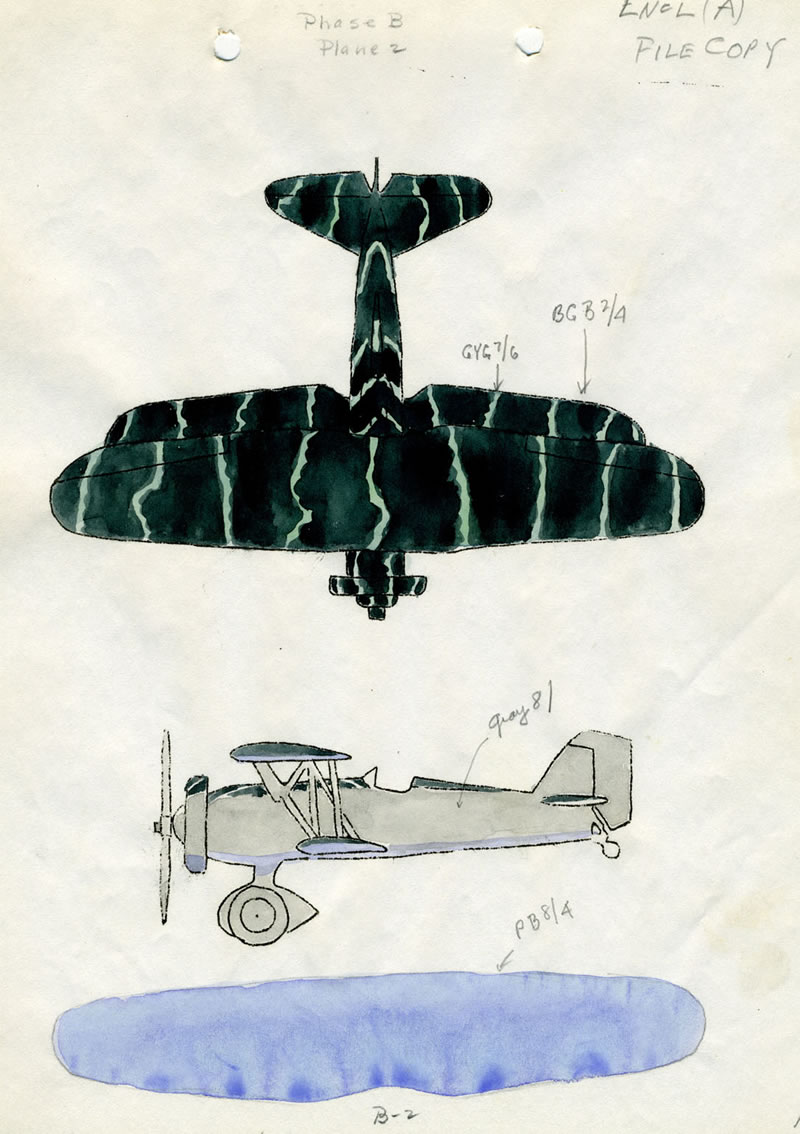
2-B-14 overall light gray [Phase B, Scheme 3]
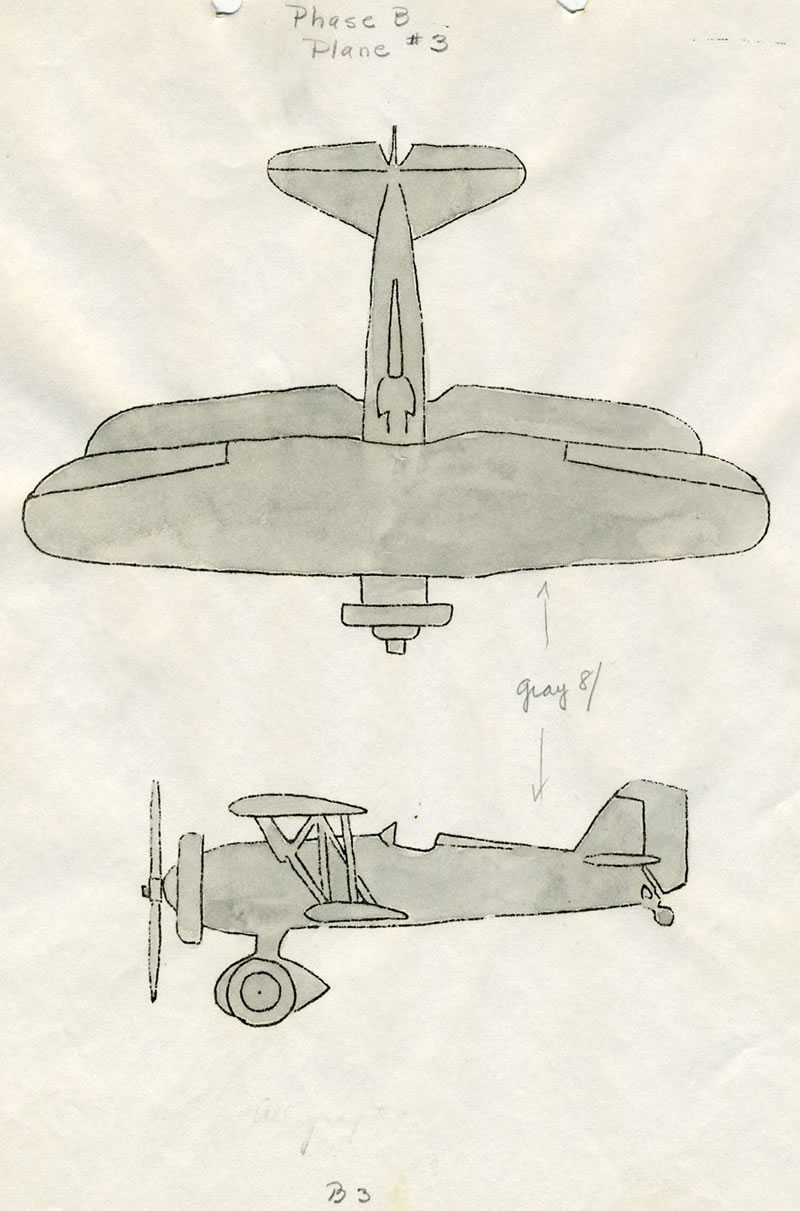
2-B-4 light gray mottled with blue [Phase B, Scheme 4]
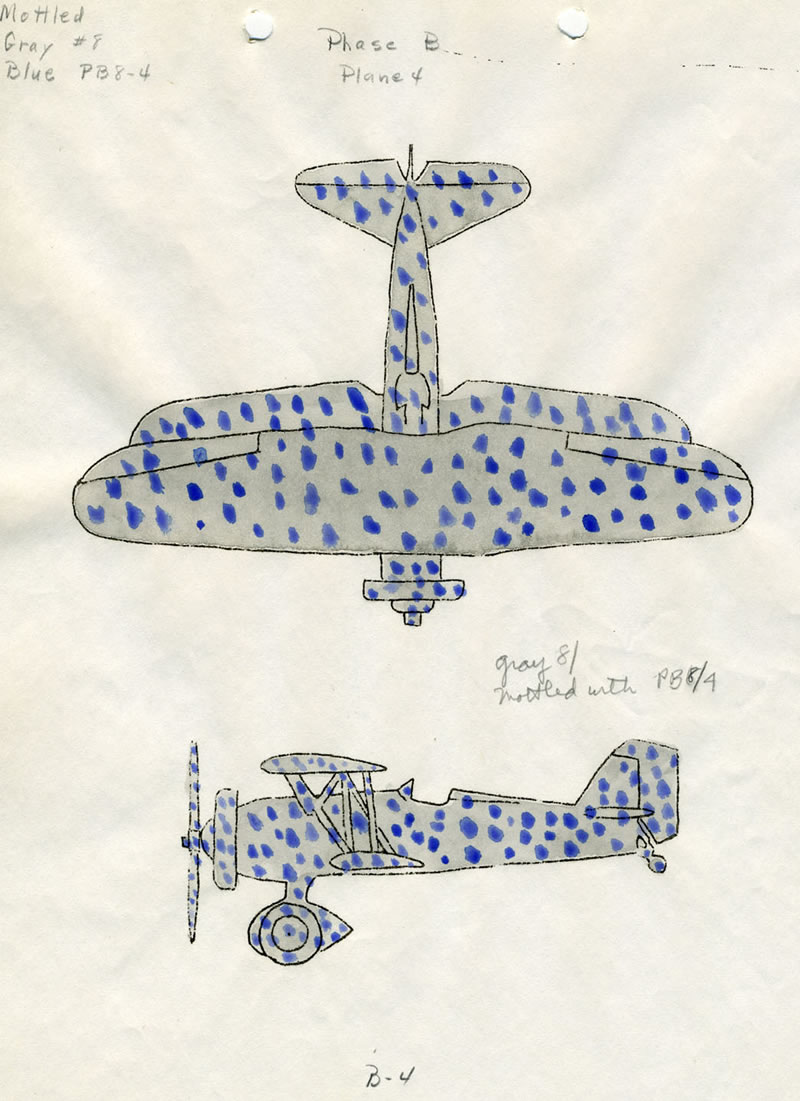
2-B-5 overall blue [Phase B, Scheme 5]
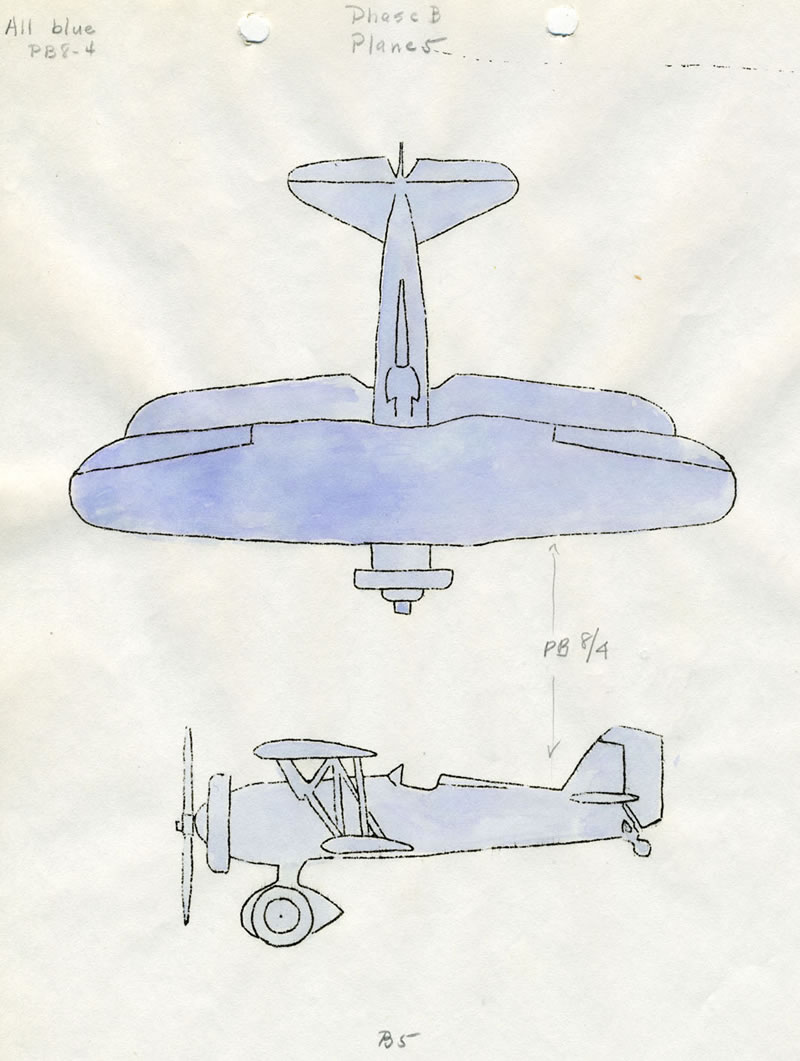
2-B-6 overall blue with light green disruptive stripes on vertical surfaces [Phase B, Scheme 6]
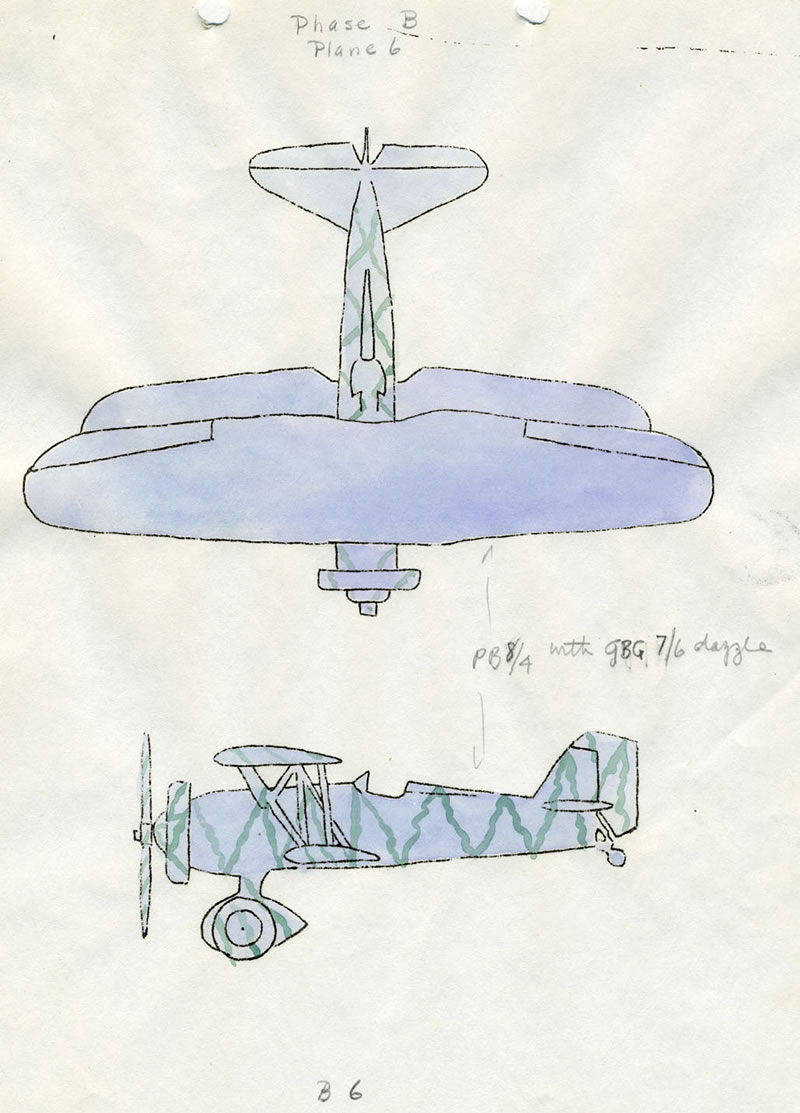
The Dark Green upper surfaces continued to camouflage aircraft seen from above, but increased visibility from below when aircraft maneuvered to attack. The new light blue and light gray were now too light, leading to Phase C of the experiments.
Phase C – 20 January 1936
With the third set of experiments at NAS San Diego, the gray and blue colors were lightened (Gray 7 and PB 7/4, respectively), while the two greens were retained. Again, the schemes were varied slightly. Although the aircraft side numbers were not recorded, the schemes were numbered as follows:
#1 - light blue mottled gray undersurfaces and sides, with the original Dark Green upper surfaces. [Phase C, Scheme 1]
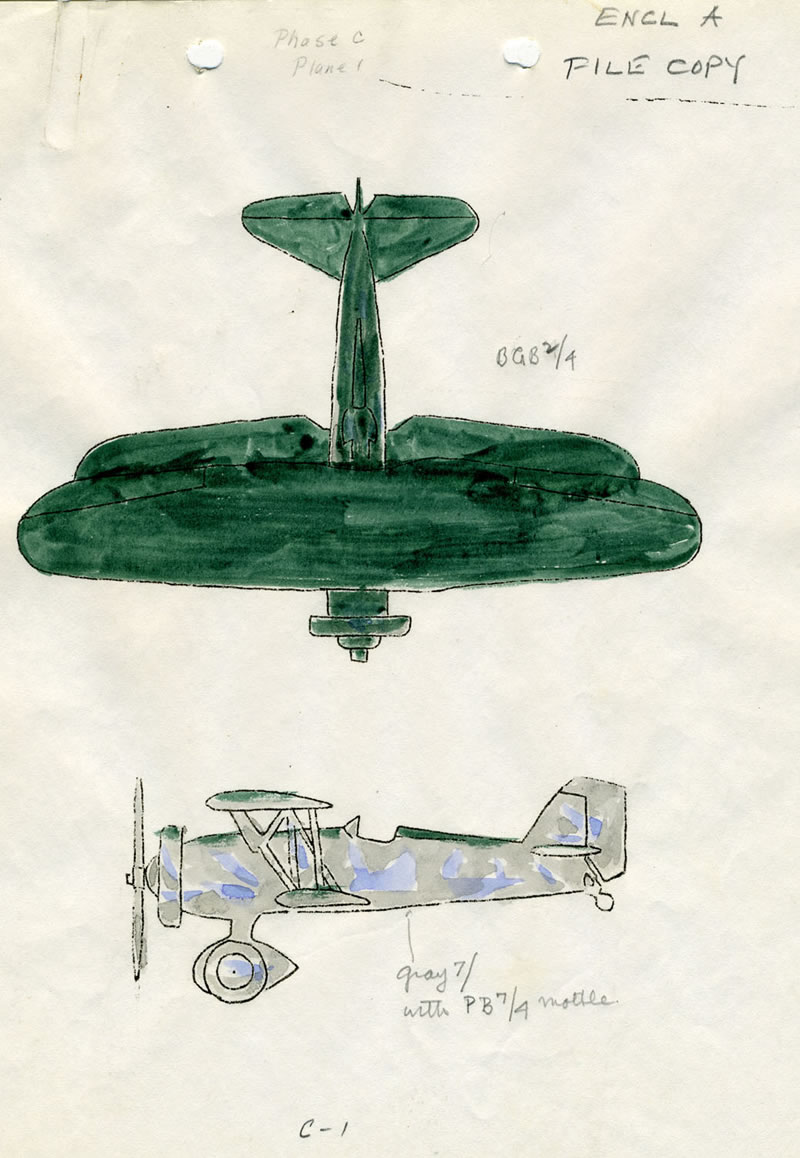
#2 - overall light blue, with a dark gray 5/ sawtooth pattern on the fuselage sides. (The report made no mention of the gray horizontal tail planes - it is uncertain that the feature shown in the artwork appeared on the test aircraft.) [Phase C, Scheme 2]
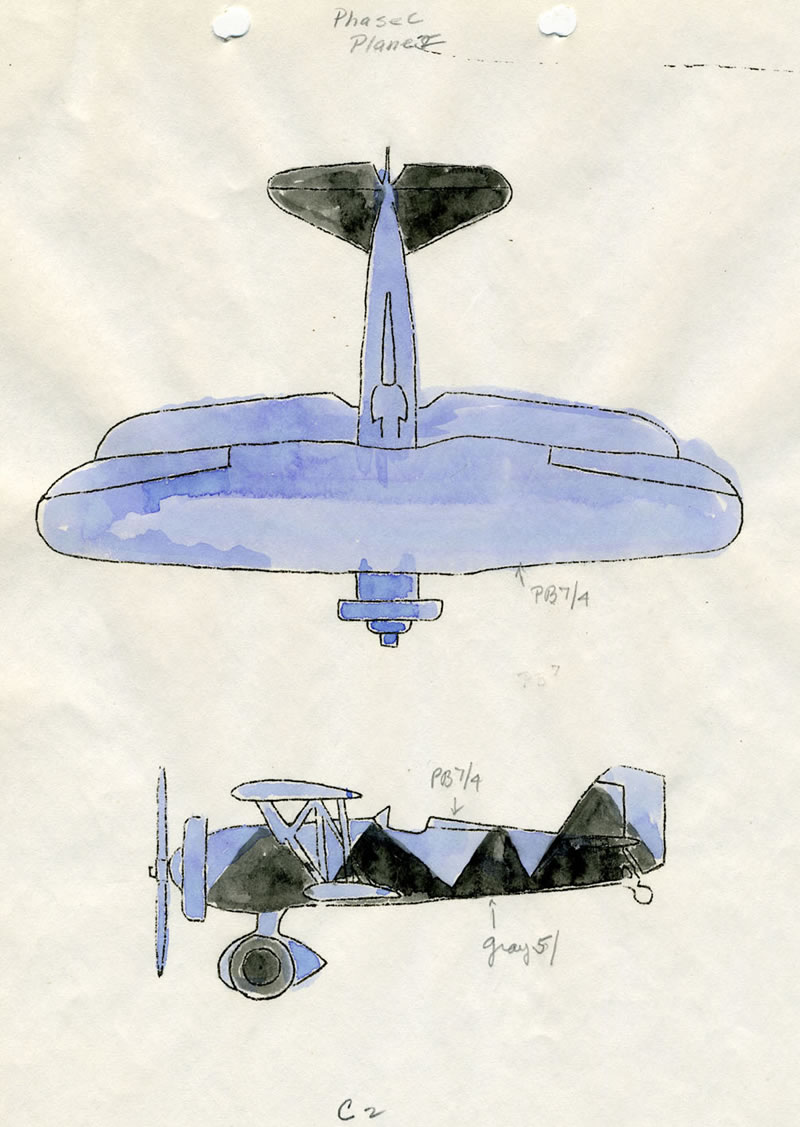
#3 - similar to aircraft #1, with the addition of light green borders to the flying surfaces and fuselage. [Phase C, Scheme 3]

#4 - overall light blue, with the fuselage painted light green between the cockpit and tail. [Phase C, Scheme 4]
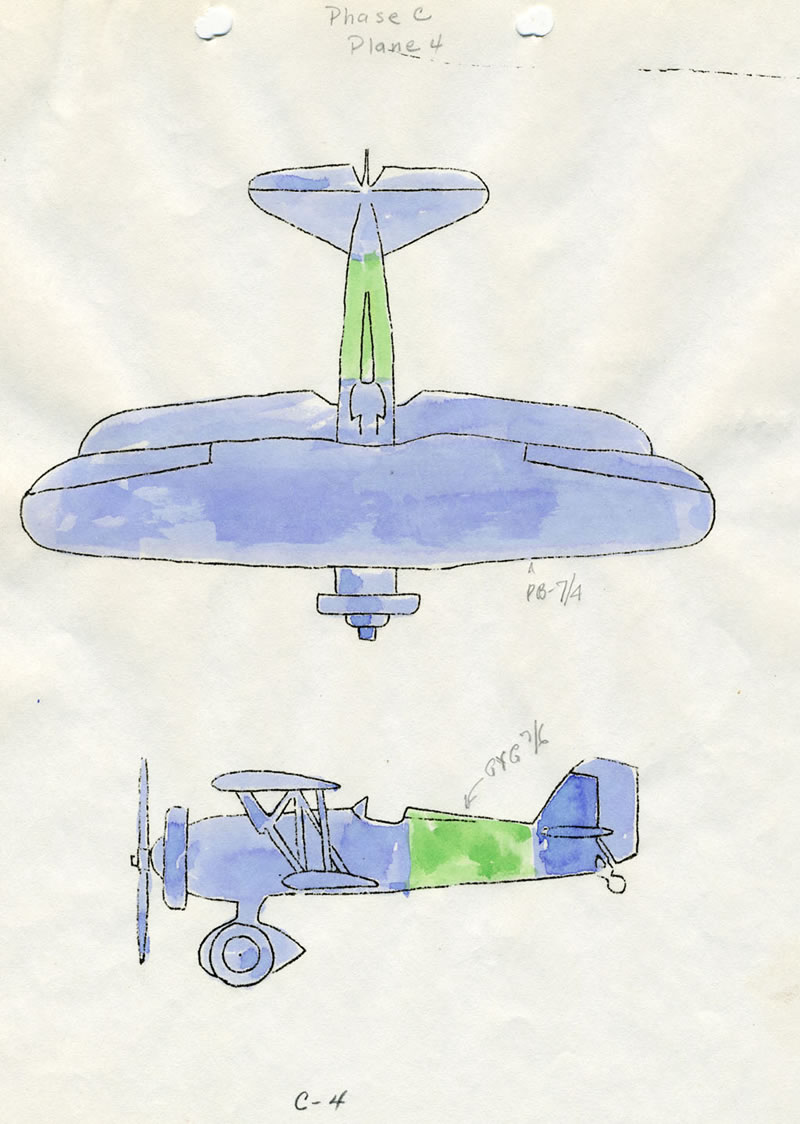
#5 - a standard yellow-winged aircraft, with neutral gray 6/ bands across the fuselage and vertical tail to reduce the overall visibility. [Phase C, Scheme 5]
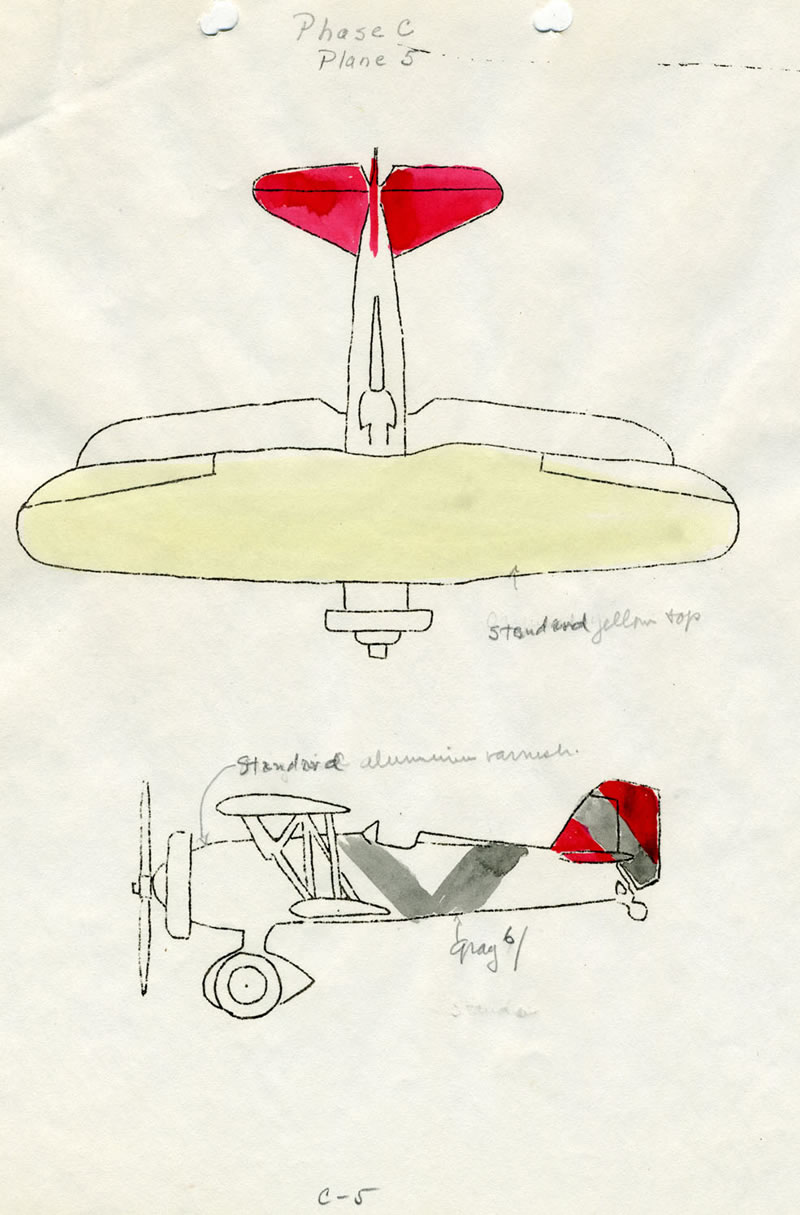
The light green edging to the Dark Green camouflage was considered far more effective than the original Dark Green, with the gray 7/ considered best for sky camouflage. In the final recommendations, Commander Aircraft, Battle Fleet, noted that the standard Navy color scheme was as good as anything else for sky camouflage, though the colorful markings should be toned down and the gloss of the aluminum and Aircraft Gray paints should be reduced.
For camouflage over water, the Dark Green, preferably with a lighter border, was optimum. The Dark Green would become that Navy's standard terrestrial camouflage paint until shortly before World War II, and the dull aluminum and light gray schemes would each see several months of service use as the war approached.
Also see Steven Eisenman's interpretation of six of these schemes in his Feature Article elsewhere on HyperScale.
Text and Images Copyright ©
2014 by Dana Bell
Page Created 26 February, 2014
Last Updated
26 February, 2014
Back to Reference Library |
Home |
What's New |
Features |
Gallery |
Reviews |
Reference |
Forum |
Search